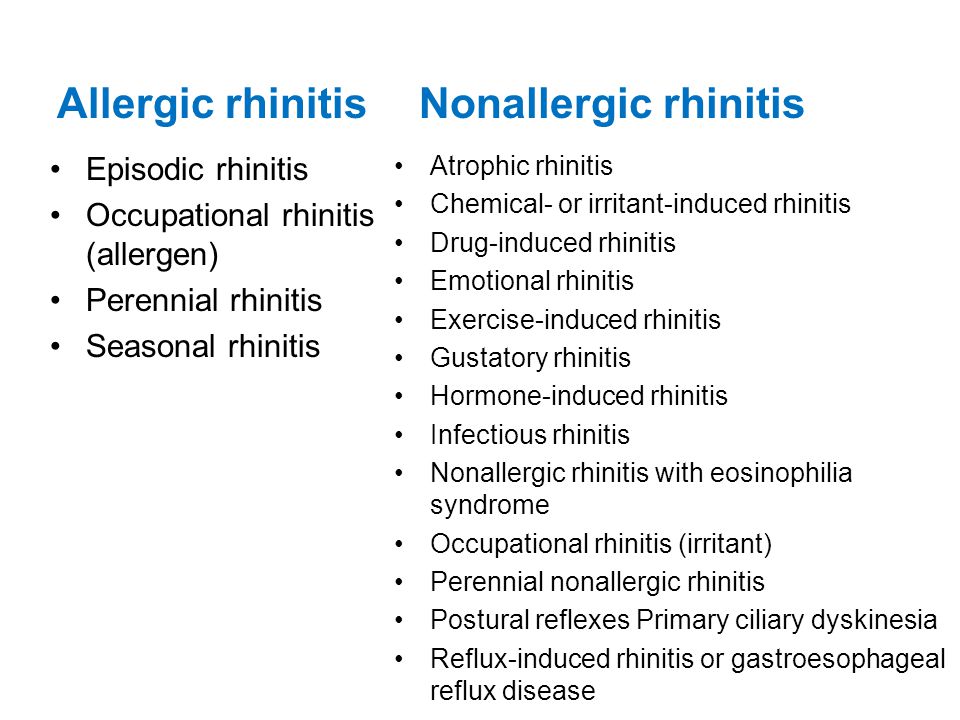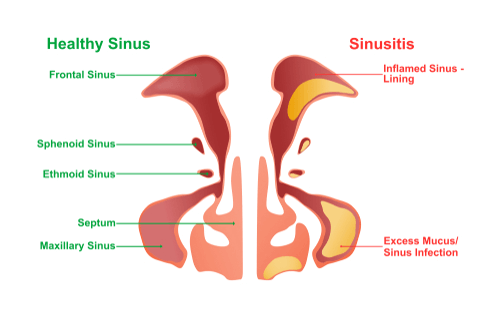
In some cases non-allergic rhinitis can lead to complications. For example an exercise which takes place in cold environments eg skiers snowboarders ice hockey induces glandular hypersecretion and nasal discharge in normal subjects under parasympathetic control and this response shows increased severity in rhinitis patients.

Suggested treatment strategies include intranasal corticosteroids decongestants and antihistamines however each have side effects that can interfere with exercise.
Exercise induced rhinitis relief. Exercise can cause rhinitis a common medical condition that can make you have a runny nose sneezing nasal congestion or an itchy nose. Allergic rhinitis is triggered by allergens in the environment. Nonallergic rhinitis may be caused by substances in the workplace or around you.
Exercise-induced rhinitis predominantly rhinorrhea commonly occurs in athletes regardless of underlying nasal allergy. A history specific to indoor and outdoor exercise triggers needs to be part of the complete rhinitis history so that specific treatment can be directed. The ideal treatments for both allergic and non-allergic individuals who have exercise-induced rhinitis include antihistamines immunotherapy as well as intravenous oral or intramuscular drugs.
One of the main concerns linked to exercise-induced rhinitis involves early recognition and proper diagnosis. The new antihistamine nasal sprays astelin astepro patanase relieve symptoms in 30-45 minutes. Otc sprays like afrin are a little faster but the a.
Currently no standardized method of diagnosis or treatment of exercise induced rhinitis exists. Suggested treatment strategies include intranasal corticosteroids decongestants and antihistamines however each have side effects that can interfere with exercise. Exercise-induced rhinitis with varying degrees of rhinorrhea congestion and sneezing has been increasingly recognized in athletes who run cycle and ski.
Cold-air-induced rhinorrhea in laboratory challenges displays a mediator release pattern similar to that produced by allergen-induced. For example an exercise which takes place in cold environments eg skiers snowboarders ice hockey induces glandular hypersecretion and nasal discharge in normal subjects under parasympathetic control and this response shows increased severity in rhinitis patients. 20 Furthermore during regular training athletes are repeatedly exposed to allergens cold air and.
EXERCISE AND ALLERGIC RHINITIS Physical exercise acts as a potent vasoconstrictor. The nasal resistance decreases gradually with increasing pulse due main-ly to release of noradrenaline International Rhinitis Management Working Group 1994. In all cases of nasal obstruction due to vasodilatation physical exercise will.
Understanding Exercise-Induced Rhinitis. Exercise can lead to experiencing rhinitis symptoms. Rhinitis refers to the swelling of the mucous membrane that lines the nose.
This inflammation creates various symptoms including. Sneezing runny nose itchy and watery eyes congestion etc. There are different causes of rhinitis which is most commonly.
Exercise induced rhinitis is a rare condition. You may experience a runny nose or rhinorrhea depending on how vigorous you exercise. However other symptoms are possible.
Exercise induced rhinitis is most commonly characterized by sneezing and inflammation of the nasal passages. Treatment for exercise-induced rhinitis may include intranasal corticosteroids decongestants and antihistamines reports the study. If youre swimming wearing a nose clip could help ameliorate your symptoms as well.
If you have exercise-induced rhinitis you may also get relief from spraying saline nasal spray into your nasal passages. Its particularly beneficial for relieving nasal stuffiness and for clearing irritants from your nasal passages. Also if you exercise at home make sure your exercise environment has.
Acute prevention of exercise-induced bronchoconstriction EIB in. Patients 15 years of age and older 12. Relief of symptoms of allergic rhinitis AR.
Rhinitis SAR in patients 2 years of age and older and perennial allergic rhinitis PAR in patients 6 months of age and older 13. Steroid nasal sprays help to relieve the congestion but you need to use them over a number of weeks for them to work properly. Read more about treating non-allergic rhinitis.
In some cases non-allergic rhinitis can lead to complications. Treatment should be offered for coexisting conditions associated with asthma such as gastroesophageal reflux rhinitis or exercise-induced laryngeal obstruction. In the case of exercise-induced.
Exercise-Induced Urticaria hives and Anaphylaxis. Exercise rhinitis is associated with runny nose and nasal blockage related to nerve activity imbalance and release of inflammatory chemicals in the nose perhaps triggered by drying of the nose. Symptoms can be reduced by trying to limit heat and moisture loss from the nose by wearing of.
Nonallergic rhinitis often happens during periods of hormonal imbalance. For instance it may happen during puberty menstruation or pregnancy. It usually starts during the second month of.
Exercise for at least two hours after receiving allergen immunotherapy. Did you know that 50 of patients with Allergic Rhinitis also have Exercise Induced Asthma. Controlling nasal symptoms will also help in better controlling EIA symptoms.
Avoiding exercise due to uncontrolled asthma should be a temporary situation. If this occurs.